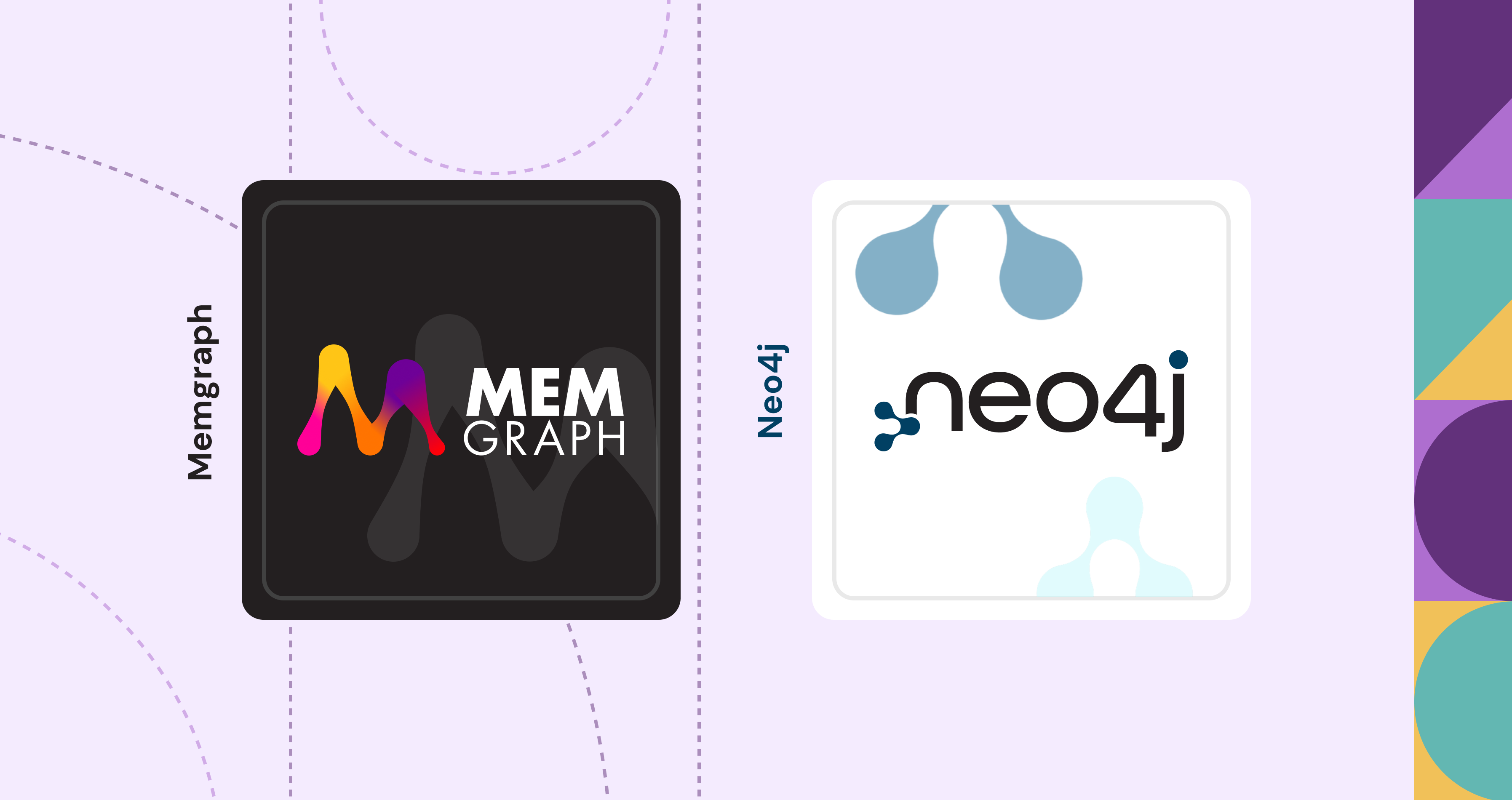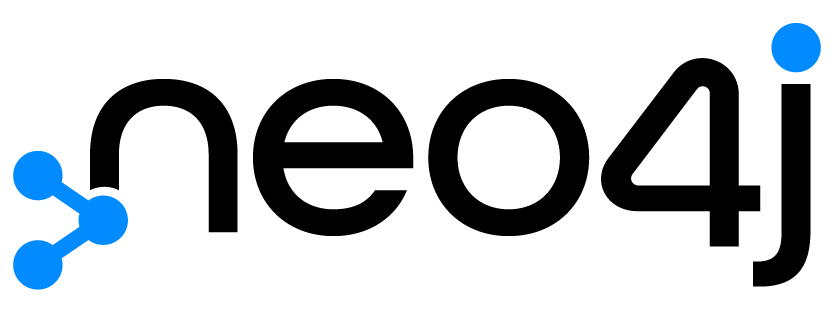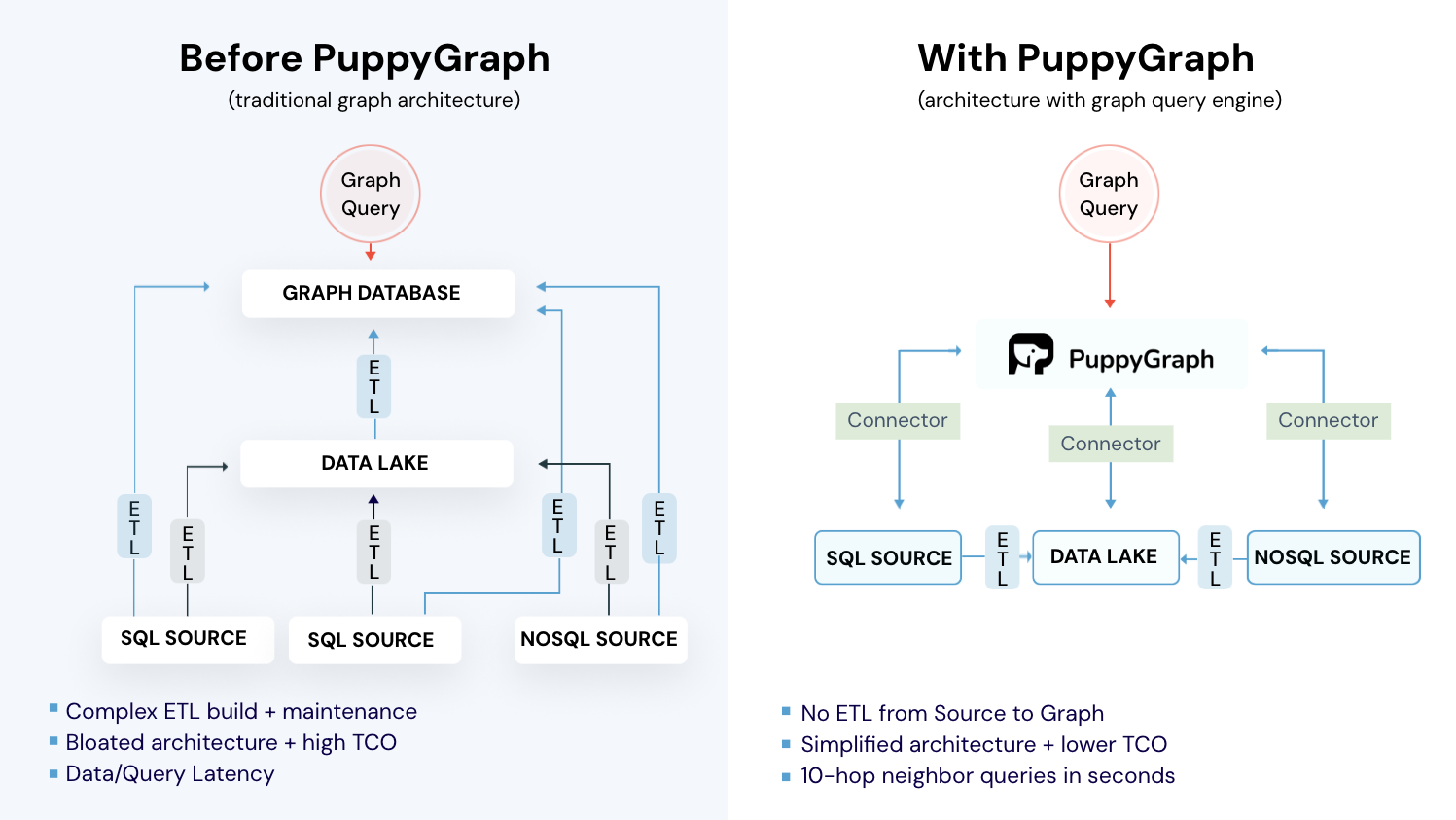Memgraph vs Neo4j: Graph Database Comparison

Graphs have moved from theoretical constructs to production pipelines that drive recommendation engines, fraud detection systems, and supply chain platforms. If you are on the lookout to adopt one for your organization, you will quickly realize the choice isn’t trivial.
Different databases embody different trade-offs; those trade-offs manifest in latency, scaling limits, and operational complexity. Underestimate this risk and you will discover too late that the database can’t meet new requirements without costly redesigns.
This article takes a close look at two widely adopted platforms, Memgraph and Neo4j. We will understand the trade-offs that matter in practice, giving you the context to make a choice that won’t collapse under real-world pressure.
What is Memgraph?

Memgraph is a real-time graph database built in C++, designed for workloads where latency and immediacy take higher priority than dataset size. It executes queries in memory while maintaining durability through write-ahead logging and snapshots. This in-memory-first design delivers sub-millisecond responses on hot datasets while still enabling recovery through WAL and snapshots.
Core Architecture
Memgraph is an in-memory property graph database. Every node and edge lives in RAM, giving it the ability to respond to queries in microseconds to low milliseconds. Unlike traditional in-memory caches, however, Memgraph writes changes to a write-ahead log (WAL) and periodically generates snapshots. Because of the resultant durability, data isn’t lost if the process crashes, and recovery can replay WAL entries to restore state. The in-memory-first approach places constraints on dataset size, but it also makes Memgraph ideal for streaming and transient graph workloads where the working set can fit comfortably into memory.
Performance Posture
Memgraph is optimized for low-latency, high-throughput graph queries. Some examples of common workloads:
- Sliding-window computations
- Real-time fraud detection
- Session-based analytics
Because all data resides in RAM, Memgraph avoids page cache misses and disk seeks common in disk-based systems, though performance still depends on dataset topology and available memory. If you look at the benchmarks from Memgraph, you will see queries resolving in sub-millisecond ranges, especially for graph algorithms like shortest path, PageRank, or community detection when run on fresh streams of data. While independent, third-party benchmarks are scarce, the best is to validate its performance with workload-specific pilots rather than general-purpose tests.
Scalability Model
Memgraph follows a vertical scaling model: to handle larger graphs, you increase the available RAM. It also supports replication for high availability, letting you run multiple instances that maintain synchronized state for fault tolerance. Read replicas can help with read-heavy scaling, but write scaling remains a limitation, since Memgraph has no built-in sharding and cannot partition a graph across multiple nodes. If your graphs evolve quickly but still fit into memory, this model simplifies operations. For graphs that grow beyond RAM, Memgraph requires careful sizing, domain partitioning, or integration with external systems to tier data.
Developer Experience
Memgraph implements openCypher, the open standard of the Cypher query language. So engineers familiar with Neo4j can use similar syntax without steep retraining.
Memgraph also offers MAGE (Memgraph Advanced Graph Extensions), a library of graph algorithms and data science modules. Developers can also extend MAGE with Python or C++ code to perform custom analytics closer to the data path. This extensibility reduces the need to shuttle large graphs out to external engines for analysis. For quick prototyping and visibility, Memgraph Lab provides a GUI where developers can run queries and visualize graph structures.
Ecosystem and Integrations
Memgraph can integrate with Kafka, Redpanda, and Pulsar data sources to ingest data, supporting use cases where you need to feed streams of events directly into the graph. Consequently, Memgraph is a natural fit for environments where the graph topology changes constantly, for example, financial transactions, telemetry data, and network monitoring.
While the broader ecosystem still lags behind more established platforms, Memgraph’s compatibility with openCypher and Bolt protocol means many existing libraries and client integrations work without modification. Its source-available Business Source License (BSL) makes it attractive for experimentation; enterprises should review production terms, noting that BSL typically transitions to Apache 2.0 after a set delay.
What is Neo4j?

Neo4j is the most widely adopted native property graph database, designed primarily for transactional (OLTP) workloads, with graph analytics available through its Graph Data Science (GDS) extensions. It's written in Java and runs on the JVM. Neo4j uses an on-disk storage model with an optimized page cache, allowing it to handle graphs that exceed available memory while maintaining predictable query performance. Its combination of mature clustering, enterprise tooling, and broad ecosystem integrations has made it the default choice for many large-scale graph projects.
Core Architecture
Neo4j implements index-free adjacency: nodes and relationships directly reference each other in storage. This means traversals don’t depend on secondary indexes, even in graphs with billions of relationships. All transactions are durably logged to disk and replicated across cluster members for persistence and consistency. Neo4j’s native storage engine is graph-first, designed for deep and frequent traversals without schema constraints.
Neo4j provides causal consistency, ensuring clients always read their own writes, even in distributed clusters. Applications achieve this through bookmarks: when a transaction commits, the client receives a bookmark token and presents it in subsequent operations. The drivers and cluster topology manager ensure that reads are directed only to servers that have processed the bookmarked transaction.
Performance Posture
Neo4j aims for a balance of transactional consistency and deep query performance. While its on-disk design can’t match in-memory systems for sub-millisecond responses, it performs extremely well in complex queries that traverse large portions of the graph. Its query planner has matured over a decade that can efficiently execute diverse workloads, from short path lookups to multi-hop dependency analysis. For analytics at scale, the Graph Data Science (GDS) library supports algorithms like PageRank, centrality, and community detection. These run in-memory on graph projections derived from the transactional store, which minimizes data movement but requires a projection step.
Scalability Model
Neo4j achieves scale and fault tolerance through its Raft-based clustering model. Clusters consist of Primaries and Secondaries:
- Primaries handle both reads and writes. Transactions are replicated synchronously to a majority of primaries (N/2 + 1) before being acknowledged.
- To tolerate F faults, M = 2F + 1 primaries are required. For example, three primaries tolerate one failure; five primaries tolerate two.
- If a cluster is created with only one or two primaries, it loses fault tolerance. In the case of two, failure of one node forces the database into read-only mode.
- Secondaries replicate asynchronously from primaries. They don’t affect fault tolerance but allow the cluster to scale out read throughput to large numbers of queries.
Leadership is assigned per database: one primary becomes the leader to order writes, while others follow. Elections occur automatically if the leader fails, and Neo4j balances leadership roles across the cluster to avoid hotspots.
Developer Experience
Neo4j created the Cypher query language; it has since influenced the ISO GQL standard. You can use pattern-matching syntax like ()-[:REL]->() to express traversals in a declarative style. Neo4j also provides the APOC (Awesome Procedures on Cypher) library, an extensive set of utilities for data import, graph transformations, and advanced functions. For data science and machine learning workflows, GDS provides over 65 algorithms plus features for graph embeddings and link prediction.
There are visualization tools like Neo4j Browser and Bloom to enable developers, analysts, and business stakeholders to explore graph data interactively without writing complex queries.
Ecosystem and Integrations
Neo4j’s ecosystem reflects its long presence in the market. It provides connectors for Apache Kafka, Apache Spark, BI tools integration through JDBC/ODBC, and multiple language drivers (Java, Python, JavaScript, Go). Enterprises have a lot to benefit from features like role-based access control (RBAC), fine-grained security, auditing, and enterprise-grade backup and restore capabilities.
In the cloud, AuraDB offers a fully managed service with SLA-backed availability, elastic resource scaling, and integrated monitoring. Scaling is achieved through managed vertical resizing rather than horizontal graph sharding.
Memgraph vs Neo4j: Feature Comparison
The following table presents a structured comparison of Memgraph and Neo4j across different dimensions.
When to Choose Memgraph vs Neo4j
During the decision-making process, take into account how the database behaves under specific workload constraints, and what those behaviors mean for your system’s performance, reliability, and cost.
When Memgraph is the Right Fit
Memgraph becomes a reliable choice when low-latency and streaming-first workloads dominate your architecture. If your system ingests continuous data streams, like financial transactions, IoT signals, and clickstream events, you’ll benefit from Memgraph’s ability to keep the entire working graph in memory and update it in real time. Sub-millisecond responses are realistic here, especially for algorithms like shortest path or PageRank when run against time-windowed data.
Memgraph is also the better fit when you want to extend the database with custom logic. Its MAGE library contains graph algorithms written by the Memgraph team and its users. Because of a native library, there’s no overhead of exporting large graphs to an external analytics environment. Such an extensibility makes a material difference especially for fraud detection, cybersecurity, or personalization engines where the topology mutates constantly and algorithms must adapt on the fly.
You should also consider Memgraph if your graph size aligns with memory scaling economics. Vertical scaling where you add more RAM remains simpler than orchestrating multi-node clusters, provided your graph fits comfortably in memory. You will incur less operational complexity, but it demands that you monitor memory headroom carefully to avoid running out of space as your dataset grows.
When Neo4j is the Right Fit
Neo4j is the stronger choice for large, persistent graphs that exceed available RAM and must remain online for years. Its native on-disk storage and optimized page cache allow it to traverse billions of relationships efficiently, even when only portions of the graph fit into memory. This makes Neo4j the safer option for knowledge graphs, master data management, and supply chain models where the dataset grows continuously and unpredictably.
Enterprise-grade operations also tip the scale toward Neo4j. Consider if you need high availability across multiple primaries, fault tolerance with Raft consensus, and read scalability with secondaries; then Neo4j’s clustering model is far more mature. The ability to federate multiple databases with Fabric, plus SLA-backed managed cloud through AuraDB, appeals to organizations that value operational continuity and vendor support as much as raw performance.
Neo4j is also advantageous when you need a comprehensive data science toolkit. Its Graph Data Science (GDS) library goes beyond traditional graph algorithms by providing embeddings, link prediction, and production-ready pipelines for machine learning. Combine that with APOC utilities and you have a platform not just for data storage, but for advanced analytics and AI-driven applications.
Whatever the final decision, it must continue to meet your requirements when data volumes multiply, query shapes evolve, and failures occur. Memgraph and Neo4j both solve graph problems, but they optimize for different operational truths.
Which One is Right for You?
Choosing between Memgraph and Neo4j comes down to how each aligns with your workloads and long-term plans. Vendor benchmarks provide useful signals, but they rarely reflect what happens in production under stress. The most reliable way to decide is to design pilots that mirror your own scenarios: mix fast-changing updates with concurrent deep queries, simulate failover events, or replay large historical datasets. These kinds of exercises quickly expose bottlenecks that controlled benchmarks tend to hide.
Operational economics also matter. Memgraph’s vertical scaling model is simple to manage as long as graphs fit comfortably in RAM and memory costs remain predictable. Neo4j’s clustering offers strong consistency and fault tolerance, but it introduces overhead in deployment and licensing. For some teams, staffing and infrastructure budgets will weigh as heavily as raw performance.
Finally, think beyond the immediate project. A graph that starts as a real-time recommendation engine may later need to integrate with long-term historical analysis. A knowledge graph built for research queries may later need to support personalization at the edge. The right system is one that can evolve with you, not just solve today’s use case.
Why Consider PuppyGraph as an Alternative
Both Neo4j and Memgraph face issues with scalability. Neo4j makes large datasets hard to load, and once they are in, complex multi-hop queries can slow down as the graph grows. Performance becomes unpredictable at scale because the database must manage its own storage and indexes in addition to the workload.
Memgraph depends on memory, so big data is difficult to fit. Simple lookups can be fast, but complex traversals can run out of memory or crash when the graph gets large. Teams end up sizing hardware around the database instead of the workload.
PuppyGraph takes a different path: it queries your existing relational databases and data lakes directly, with no ETL and no duplication.


This zero-ETL approach avoids one of the biggest pain points in graph adoption. You can create graph schemas over current tables, run queries in openCypher or Gremlin, and visualize results in minutes without moving data. The same dataset can be explored in both SQL and graph form, so teams don’t need to maintain parallel stacks.
PuppyGraph also supports defining multiple graph views over the same data through simple JSON schemas. That makes it easy to view the same relational tables from different angles, all without restructuring or duplicating data.
Because compute and storage are separated, PuppyGraph scales to petabyte-level datasets and handles multi-hop queries efficiently. Complex queries that would normally require sharding or heavy caching can be executed in seconds. Costs are also significantly reduced with PuppyGraph, since you only pay for compute when you query rather than for a standing graph cluster and a second storage tier.
If your evaluation shows that Memgraph and Neo4j each fit some but not all of your needs, PuppyGraph offers a practical alternative: a single platform that lets you explore connected data directly where it already lives.
Conclusion
Memgraph and Neo4j emphasize different strengths: Memgraph focuses on in-memory speed for streaming and real-time graphs, while Neo4j offers durable storage and mature clustering for long-lived datasets. Both approaches require moving data into their own engines.
PuppyGraph takes a lighter path by querying existing databases and data lakes directly, with no ETL or duplication. You can model multiple graph views on the same data and run both analytical and real-time queries in minutes. To get started, you can grab PuppyGraph's forever free Developer edition, or book a free demo today to talk with our graph experts.
Get started with PuppyGraph!
Developer Edition
- Forever free
- Single noded
- Designed for proving your ideas
- Available via Docker install
Enterprise Edition
- 30-day free trial with full features
- Everything in developer edition & enterprise features
- Designed for production
- Available via AWS AMI & Docker install






